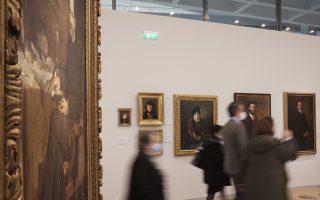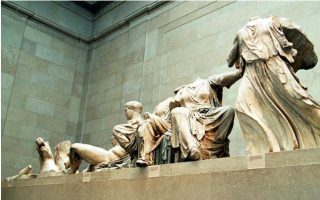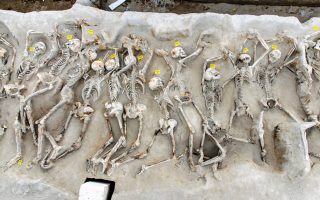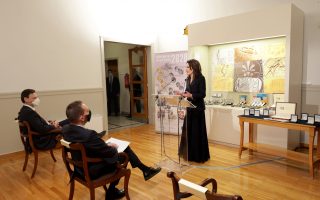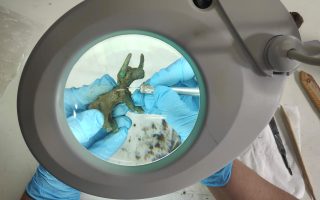Inside the newly renovated National Gallery
Kathimerini got to explore the rooms of the permanent collection and the 1821 exhibition, ahead of the official opening
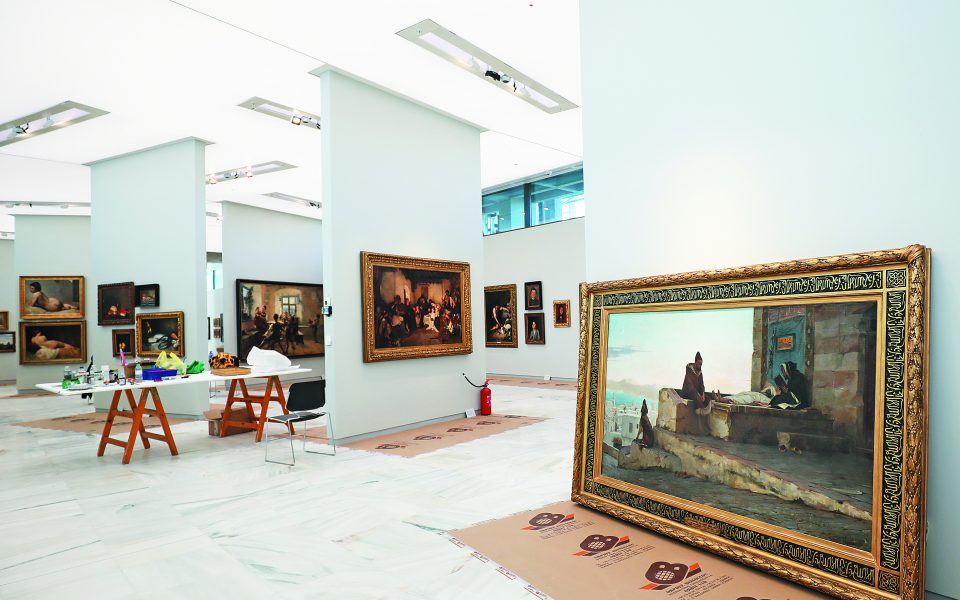
The loud noise made by the machinery polishing the white marble in the entrance of the National Gallery in Athens was almost enough to drown out the commotion on nearby Vasileos Konstantinou Avenue. Construction crews were preparing the areas around the building’s perimeter that will be filled with decorative plants, and the water canal that will stretch to Costas Varotsos’ sculpture “Dromeas,” or “The Runner.” Workmen had climbed up the scaffolding to add the finishing touches to the new bilingual sign over the entrance, in a new font with parallel and angled lines standing out over the glass spire which seems to protrude from the very earth.
The moment we entered the foyer however, walking past “The Walking Man, on a Column” by the French sculptor Auguste Rodin, almost symbolizing the unification of two diverse styles, the bothersome noises of the city disappeared. The city of Athens will be visible but not audible, we were told later by the director of the National Gallery, Marina Lambraki-Plaka. Despite the new building being exceptionally soundproof, it will also have enough windows to allow visitors in the gallery to take in the urban views around the gallery, as well as allow in plenty of natural light.
I was trying to imagine the visitors queuing, with the appropriate 2-meter distancing, in the foyer. It has been fitted out with wooden furniture, integrated touch screens, and large panels on which videos of the exhibits were playing. The ticket hall and the gift shop are located in the foyer, and it is there that Panagiotis Tetsis’ much-loved painting “Laiki Agora” will be exhibited. From the foyer, visitors will be able to either go to the wing housing the gallery’s permanent collection or to the temporary exhibit venues, workshops and amphitheater. The Ilisos café will be open next to the canal, while the Parthenis restaurant and café will serve customers on the top floor outside of the gallery’s opening hours.
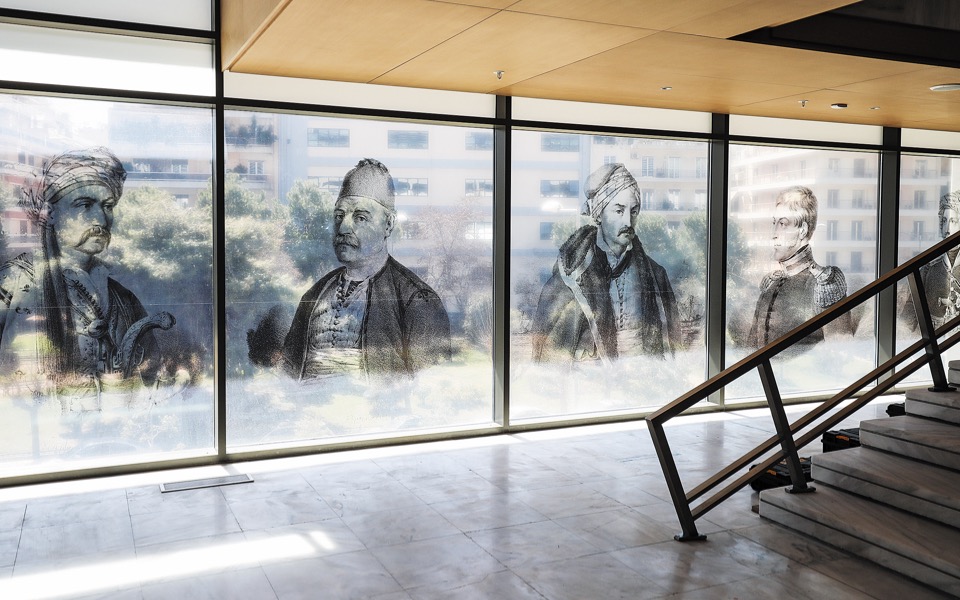
We then walked across the glass bridge that connects the ticket hall to the Stavros Niarchos Foundation Wing, which houses the permanent collection, following the route that the dignitaries and officials invited by the Greek state will take when they visit on the occasion of the bicentenary of the start of the Greek War of Independence for a symbolic ceremony. “The collections of the National Gallery share the same path as the history of the Greek state,” Culture Minister Lina Mendoni told Kathimerini, adding that the reopening of the gallery is a symbol of the country’s outward-looking mentality. “At the same time, it is a message of hope, as this important project was completed quickly, during the pandemic, in a period of many significant challenges,” she points out.
The exhibit celebrating 1821 gives particular emphasis to the works of Theodoros Vryzakis. Two of his most famous paintings, “The reception of Lord Byron in Missolonghi” and “The Exodus from Missolonghi,” which have defined the collective consciousness of the events of the Greek War of Independence, are positioned almost in a dialogue with each other. Of course, one could also not help but pay special attention to Eugène Delacroix’s “Episode from the Greek War of Independence” and the painting by Russo-Armenian Ivan Aivazovsky depicting the firebombing of the Turkish flagship by Konstantinos Kanaris, the latter of which will also be highlighted during the special visit by dignitaries and officials, who will include Russian Prime Minister Mikhail Mishustin.
Visitors to the permanent collection, which opens with 19th century paintings, will be met at the entrance by the imposing full body portrait of Clemence Serpieri (1869) by Nikiforos Lytras, a work of particular weight, both artistic and literal (as it took a group of eight people to get it into position). In the first room of the permanent collection, visitors will see important works by, among others, Nikolaos Gyzis, Konstantinos Volanakis, Georgios Jakobides and Konstantinos Parthenis, who portray not only Greek social changes but the interactions of these painters with other artistic movements of the era. “The path forged by our wandering eyes will help create the path of our movement in the space,” says Lambraki-Plaka. She hopes that the eyes of the Prince of Wales will also stop on “Athenian Evening” by Iakovos Rizos, in which experts speculate Prince Nicholas of Greece (1872-1938) is depicted, the great-uncle of Charles and the brother of Prince Philip’s father.
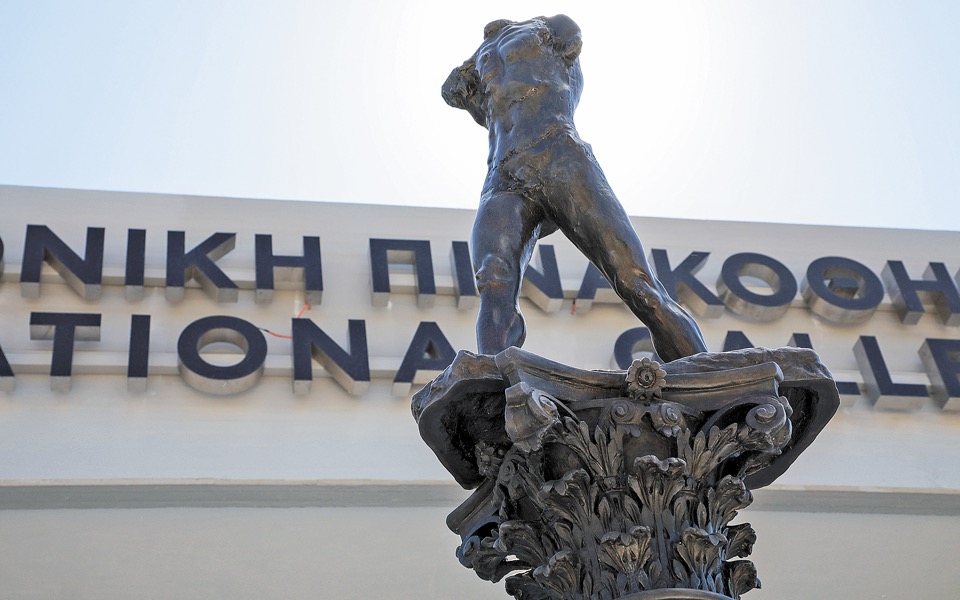
The opening of the National Gallery for the public is planned for June – of course if the pandemic and public health measures allow it – and visitors will then be able to see double the amount of works that were exhibited in the past. There is an aesthetic and ideological question to art from the 20th century, Lambraki-Plaka told Kathimerini. “Emphasis is given to the search for more open-air painting, which is intrinsically marked as ‘Greek’ as a purely aesthetic pursuit,” she notes, referring to the painters that comprise the “Art Group” (Lytras, Parthenis and others). The interwar period, she continues, is defined by the trauma of the Asia Minor Catastrophe and is apparent in an introversion exhibited on the canvases of the era. “All this crystalizes in the ‘30s Generation’ with its known pursuit of a synthesis between modernism and tradition,” she points out. The works of the permanent collection displayed extend to the early 21st century.
Shortly after entering the new National Gallery, there is an evident ambience of modernity and novelty. Not with grand maximalism but with an “understated luxury.” The doubling of the gallery’s size as well as the new infrastructure available must mean more costs, we suggest to Mendoni. “These costs have already been included in the Culture Ministry’s budget for 2021. We aim to bring the annual funding of the gallery up to 2.5 million euros again, meaning the level of funding that was available before 2010 and the financial crisis,” responds the minister. The completion of this demanding project is the end of a journey for the National Gallery. Is it the same for its director? “My dream and the aim of my tenure was the expansion and modernization of the National Gallery,” Lambraki-Plaka told us, highlighting the support of the prime minister, the culture minister, and all governments. “It is natural to feel a sense of satisfaction and gratitude that my vision could be become reality. I now want to see it in action and see it fulfilling its purpose. That is where I will focus all my energy,” she concludes.
